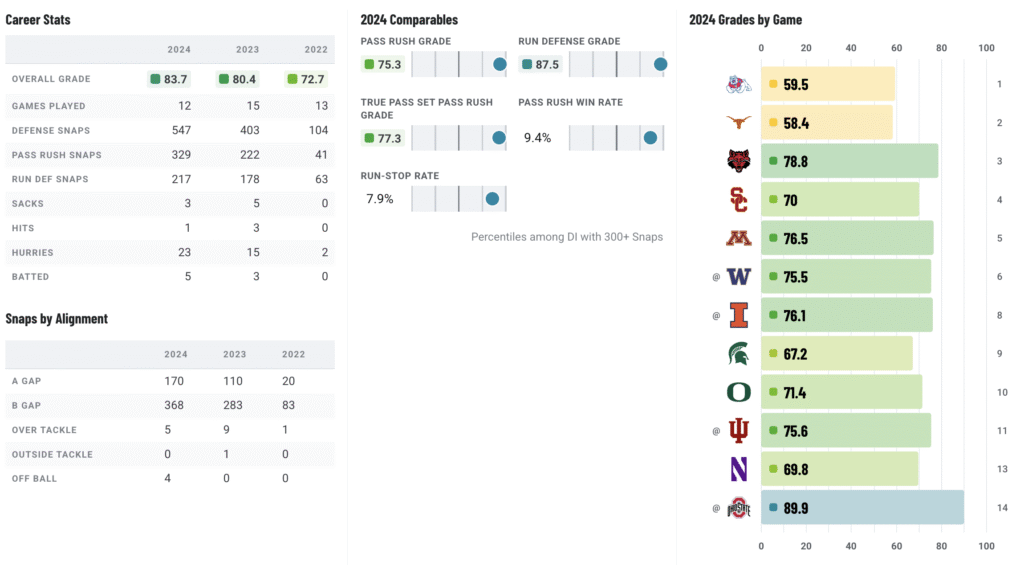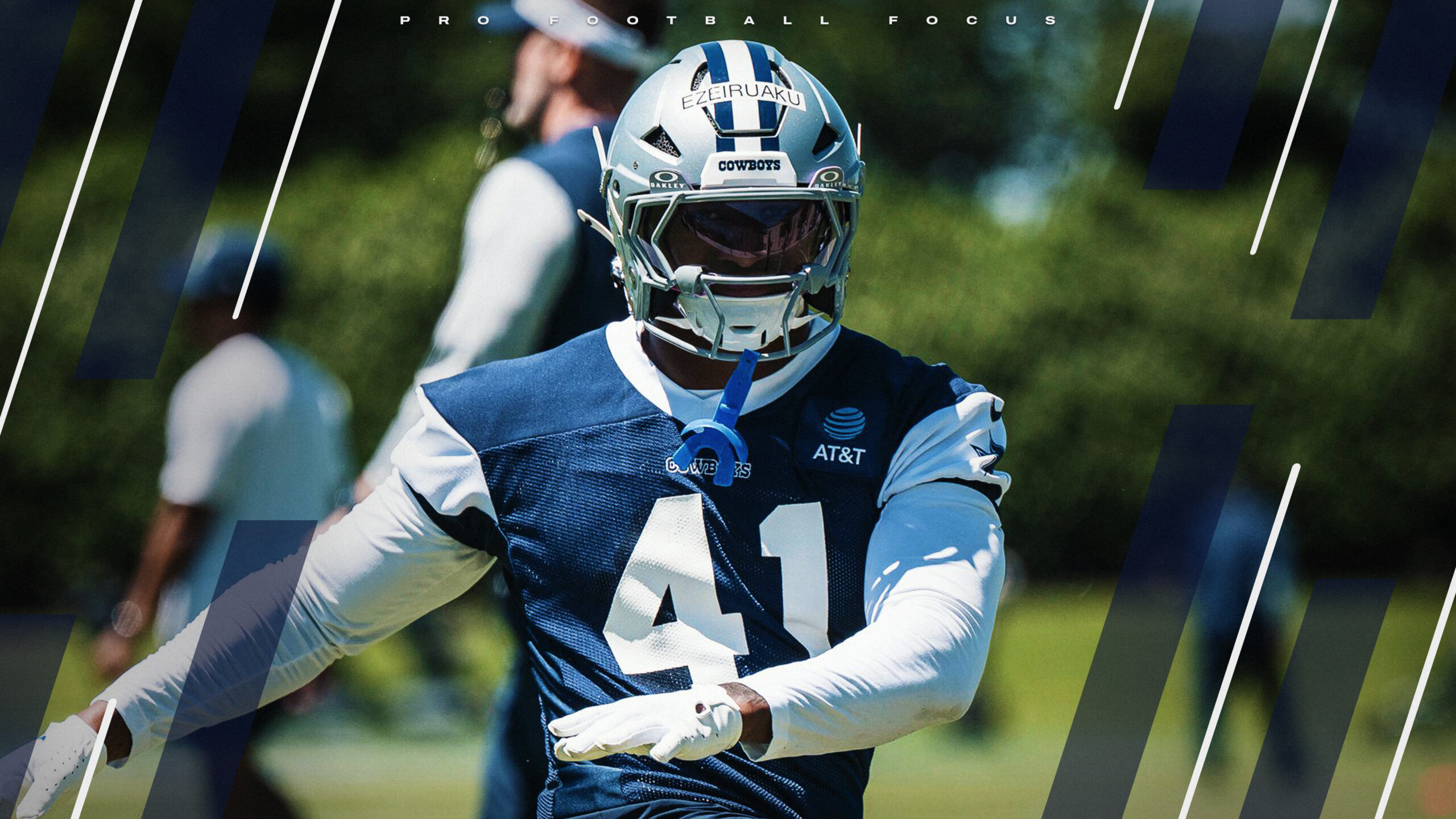PFF one big takeaway for each team AFC East addition:
MIAMI DOLPHINS: IMPROVEMENT IN THE TRENCHES, BUT WILL THE SECONDARY SURVIVE?
Miami entered the offseason with clear concerns in the secondary after finishing 25th in coverage grade last season and losing multiple starters, most notably star safety Jevon Holland. Yet in the early rounds of the draft, the Dolphins focused on the trenches, selecting defensive tackle Kenneth Grant and offensive lineman Jonah Savaiinaea. Both players should help stabilize their respective units, but the lack of urgency in addressing the secondary was notable.
Miami didn’t draft a defensive back until the fifth round, raising eyebrows given the current roster turnover, and with Jalen Ramsey trade rumors still lingering, the uncertainty only grows. As things stand, the Dolphins may have done too little, too late to shore up their coverage unit for 2025.
 Kenneth Grant's 2025 NFL Draft Profile
Kenneth Grant's 2025 NFL Draft Profile
The new regime in New England has made it a priority to build the right support system around rookie quarterback Drake Maye. And so far, they’re off to a strong start. After fortifying the defense with several veteran additions in free agency, the Patriots focused heavily on offense in the draft, using their first four selections to surround Maye with talent.
First-round pick
Will Campbell is expected to start immediately at left tackle, providing blindside protection from Day 1. Center Jared Wilson could also push for a starting role on the interior. On the perimeter, running back
TreVeyon Henderson and wide receiver Kyle Williams inject much-needed explosiveness into an offense that ranked 30th in overall grade last season. With those additions, the foundation is finally being laid for sustainable offensive growth in Foxborough.
NEW YORK JETS: AARON GLENN’S YOUTH MOVEMENT
The Jets’ new regime has made it clear that their focus is on sustainable, long-term growth, and their draft strategy reflected that vision. Each of their first three picks — Armand Membou, Mason Taylor and
Azareye'h Thomas — will be just 21 years old throughout their entire rookie season, giving the coaching staff a young, moldable foundation to build around.
Membou, who earned an elite 90.6 PFF grade at Missouri last season, projects as the immediate starter at right tackle. Taylor is the front-runner to take over at tight end for a unit that ranked 30th in overall grade in 2024. While Thomas may not start right away, he offers length, athleticism and the press-man traits that defensive coordinator Aaron Glenn typically covets in his corners.
It’s a class that may not generate instant headlines, but one that fits perfectly into a methodical, long-term plan to reshape the Jets’ future.
BUFFALO BILLS: FILLING THE GAPS ON DEFENSE
After finishing 28th in team defense grade last season, the Bills made the smart move to reload on that side of the ball in the 2025 draft. First-round cornerback
Maxwell Hairston is expected to step into a starting role right away, while defensive linemen
T.J. Sanders,
Landon Jackson, and
Deone Walker all have the tools to compete for immediate playing time in the trenches. Even late-round picks like cornerback
Dorian Strong and safety Jordan Han**** could contribute early and bolster the team’s depth. If Buffalo can get meaningful snaps from just a few of these rookies, they'll have the supporting cast needed to make a serious Super Bowl run.
Highlighting one key takeaway for all 32 franchises — a snapshot of what each team prioritized, what it says about their roster construction strategy, and how it might shape the upcoming season.

www.pff.com












